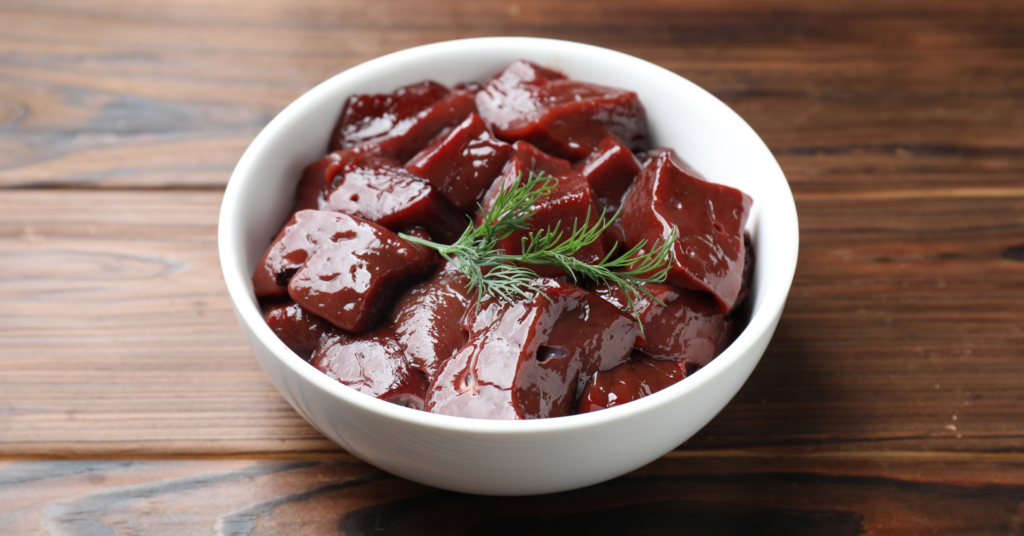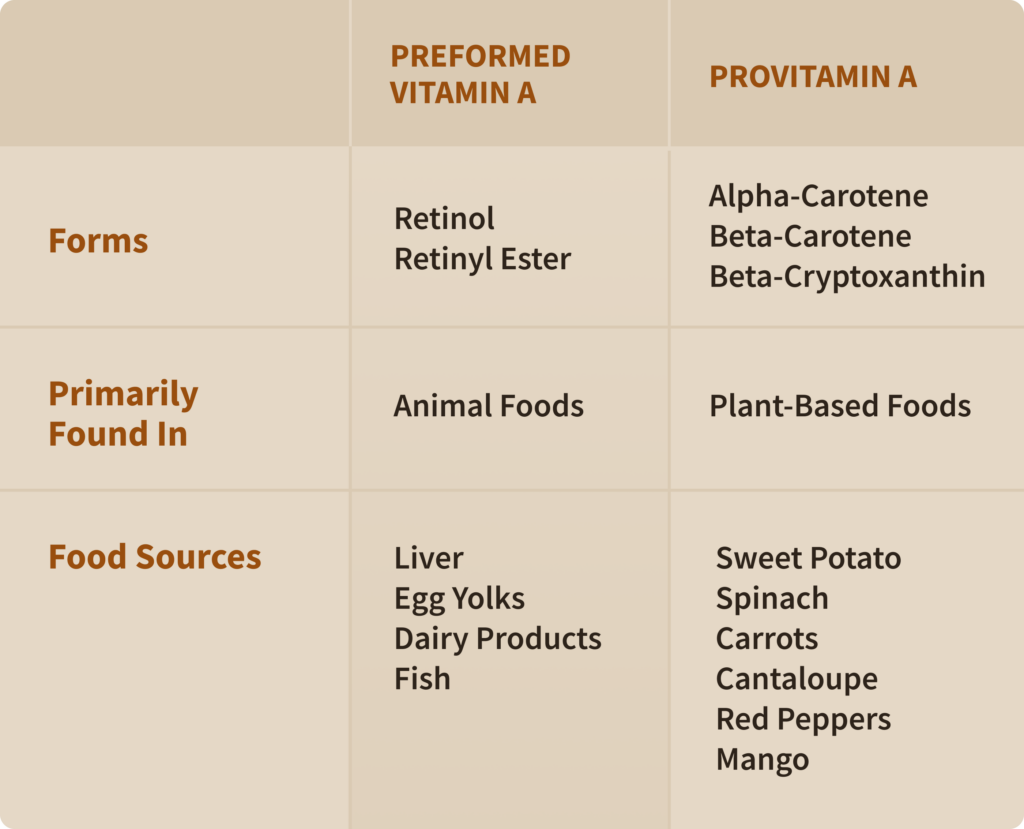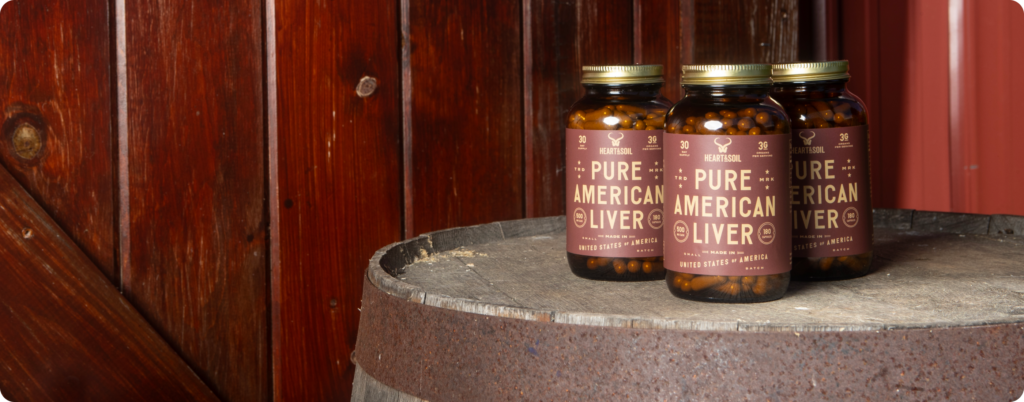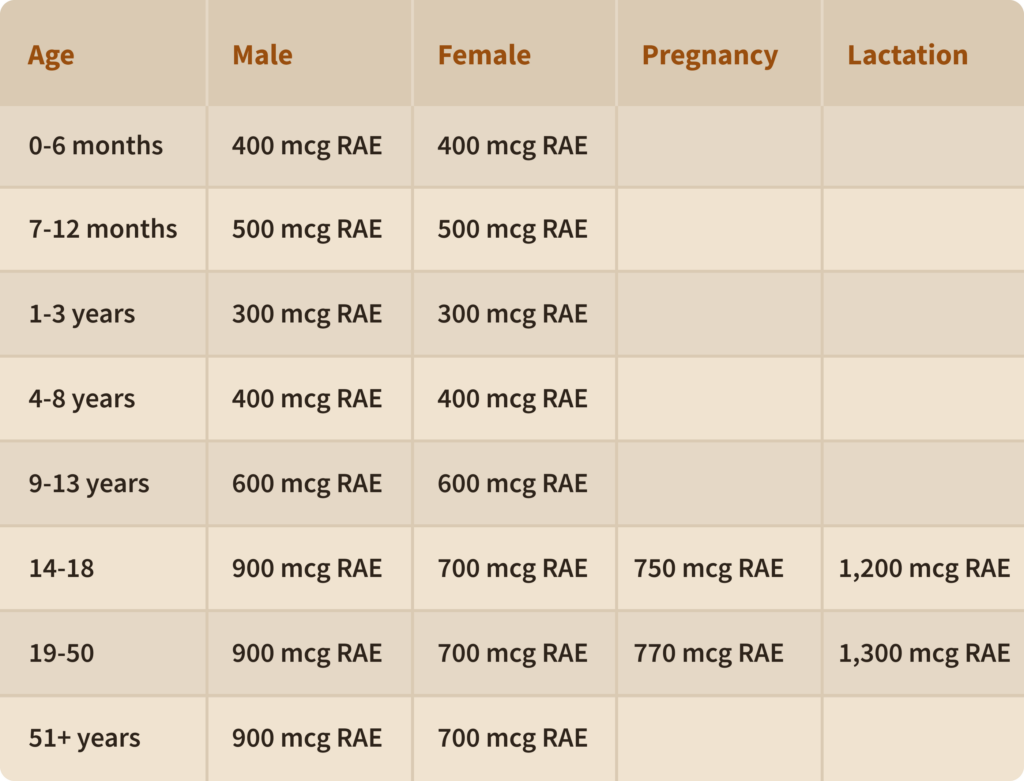PLEASE NOTE: The information in this blog is for educational purposes only. It is not a substitute for professional medical advice. Consult your healthcare provider if you’re seeking medical advice, diagnoses, or treatment.
We often think of the foods we eat in terms of calories or overused catchphrases like “all-natural.” While these offer some useful information, this way of thinking can lead us astray.
What often gets ignored is the question, “what nutrients does this food provide?” One of those oh-so-important yet overlooked nutrients is vitamin A. It may not be sexy or marketable, but it has a tremendous impact on the human body.
In fact, in a world full of highly processed foods and fear of animal foods, some of the best sources may be missing from your diet.
This article outlines the many benefits of vitamin A, the best foods for vitamin A, and will help you find the right amount needed to feel your best!
The Power of Vitamin A
Vitamin A is crucial for numerous functions such as (1, 2, 3, 4):
- Healthy vision
- Growth & development
- Improving immune function
- Reproduction
- Integrity and function of the skin, gut, and eyes
- Bone health
Vitamin A is a fat soluble vitamin (along with vitamin D, vitamin E, and vitamin K) that doesn’t necessarily have to be ingested daily. But, it cannot be created by humans and needs to be obtained from food (5, 6).
A problem in more than 50% of countries, Vitamin A deficiency can lead to complications like anemia, blindness, a weakened immune system, and limited growth (7, 8). On the other hand, too much vitamin A can lead to serious issues.
The bottom line is that vitamin A is extremely important, but there are considerations to be aware of when choosing foods for vitamin A.
The Different Forms of Vitamin A: What You Need to Know
Vitamin A comes in two main forms. The first is preformed vitamin A, found primarily in animal foods like liver, egg yolks, dairy products, and fish (9, 10). Preformed vitamin A provides around 70% of the vitamin A intake in Western diets (11).

The second form, provitamin A, comes from plant-based foods such as fruits and vegetables (12). These plant foods contain vitamin A from carotenoids, which lead to the green, red, yellow, or orange coloring in many fruits or vegetables (13).

Preformed and provitamin A are absorbed differently in the body.
Carotenoids need to be converted to retinol before your body can use them. The amount of vitamin A absorbed from food depends on the individual and numerous other factors (14).
However, about 70-90% of preformed vitamin A is absorbed, while only about 3% of provitamin A from carotenoids is absorbed (15). Beta-carotene from plant foods is estimated to be absorbed between 7% and 65%.
Only a portion of the provitamins in your diet are converted to vitamin A based on your needs. The rest serve as antioxidants (16). Factors such as cooking methods, genetics, the amount of fat in the diet, and the ripeness of the fruit or vegetable can all impact conversion as well (17).
The Best Foods For Vitamin A
As we saw, the most bioavailable foods for vitamin A come from animal sources. But here is a more extensive list of foods high in vitamin A (18):

One of the most potent natural sources of vitamin A is beef liver. Not only is beef liver an amazing source of vitamin A, but a tiny portion contains bioavailable vitamin B12, iron, selenium, copper, and other key nutrients not found in isolated vitamin A supplements (19).

Pure American Liver is a fantastic alternative if you can’t find fresh liver or cannot stand the taste. It simply contains grass-fed liver from USDA organic cattle ranches in the United States. This supplement provides a concentrated source of bioavailable vitamins, minerals, and amino acids primed to fuel your energy and well-being.
How Much Vitamin A Do You Need?
We always suggest speaking with a health professional about your specific needs, but here is some general information on vitamin A intake to get you started.
Given its role in growth and development, infants and young children have higher demands (about 50% of what an adult needs) for vitamin A (20, 21). These age groups also depend on the vitamin A content of their mother’s breast milk or the inclusion of bioavailable vitamin A from animal foods (22).
The recommended dietary allowance (RDA) for vitamin A in retinol activity equivalents (RAE) are as follows (23):

Vitamin A dietary guidelines used to be measured in international units (IUs), but mcg RAE is now used instead. You can convert IU to mcg RAE using this information:
- 1 IU retinol = 0.3 mcg RAE
- 1 IU supplemental beta-carotene = 0.3 mcg RAE
- 1 IU dietary beta-carotene = 0.05 mcg RAE
- 1 IU dietary alpha-carotene or beta-cryptoxanthin = 0.025 mcg RAE
You can also use the apps Cronometer or MyFitnessPal to track your vitamin A intake easily.
How to Find Balance With Vitamin A & Feel Your Best
Vitamin A is a Swiss army knife with benefits ranging from immune system support and eye health to ensuring proper growth and development.
Although there are many vitamin A rich foods, the most bioavailable options come from animal foods like liver, dairy products, and seafood.
Vitamin A is frequently associated with fear of vitamin A toxicity, but these concerns are generally from polar bear liver, which is exceptionally high in vitamin A. As they say, “the dose makes the poison,” and vitamin A is no different.
Consuming the optimal amount of this micronutrient is crucial for feeling your best!
Subscribe to future articles like this: